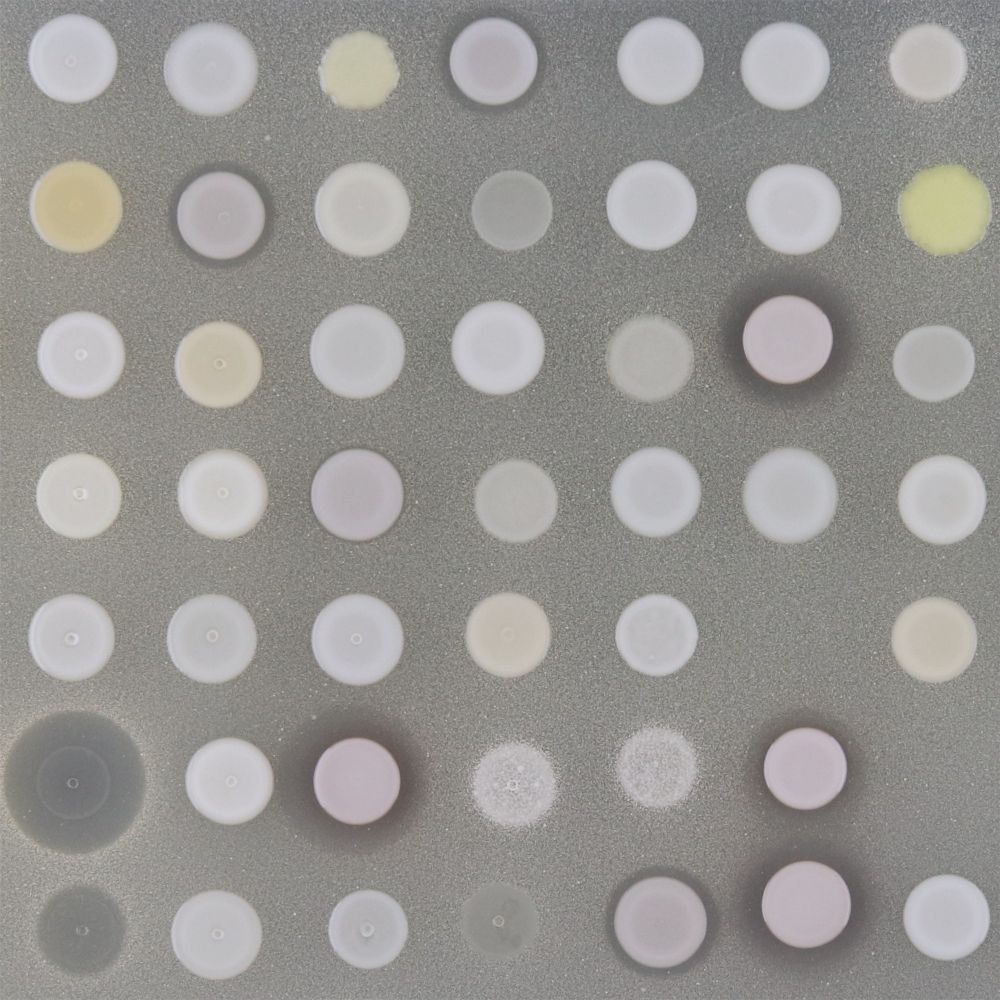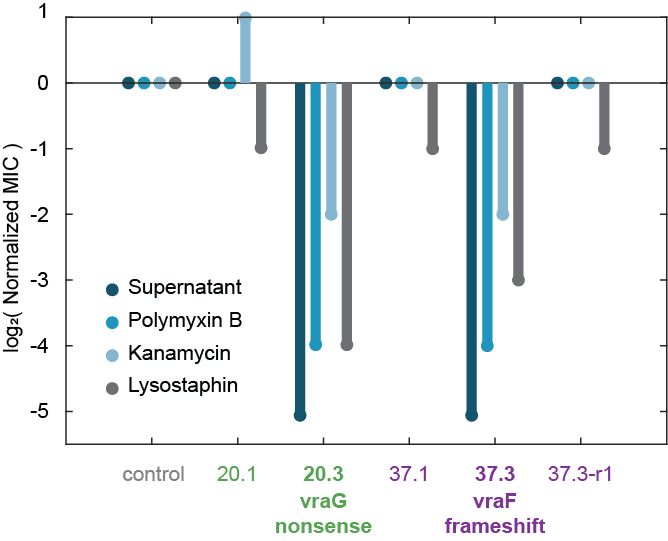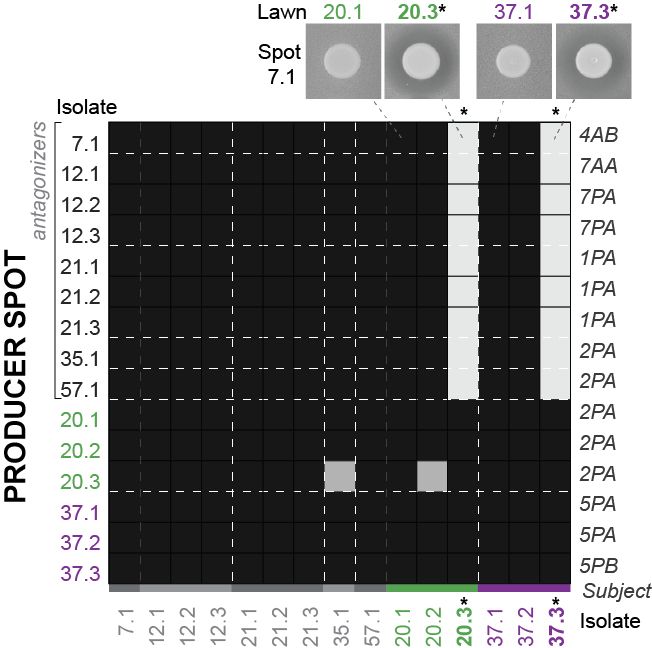Chris Mancuso
@mancusosci.bsky.social
Engineering non-model microbes @ Cultivarium | soft spot for microbiomes and DIY tech | he/him
Given the recent X-odus, I'll reintroduce my postdoc research:
Commensal skin bacteria not only attack pathogens, but also fight among themselves! This intraspecies (& interspecies) warfare not only limits which strains can coexist on each person, it also makes cool-looking petri dishes 😎
Commensal skin bacteria not only attack pathogens, but also fight among themselves! This intraspecies (& interspecies) warfare not only limits which strains can coexist on each person, it also makes cool-looking petri dishes 😎

October 21, 2024 at 9:04 PM
Given the recent X-odus, I'll reintroduce my postdoc research:
Commensal skin bacteria not only attack pathogens, but also fight among themselves! This intraspecies (& interspecies) warfare not only limits which strains can coexist on each person, it also makes cool-looking petri dishes 😎
Commensal skin bacteria not only attack pathogens, but also fight among themselves! This intraspecies (& interspecies) warfare not only limits which strains can coexist on each person, it also makes cool-looking petri dishes 😎
Being a postdoc is strange. One day you're writing a faculty applications highlighting your unique and valuable skillset, the next you're making 2L of 8x concentrated artificial sweat...

September 24, 2024 at 5:04 PM
Being a postdoc is strange. One day you're writing a faculty applications highlighting your unique and valuable skillset, the next you're making 2L of 8x concentrated artificial sweat...
So, as you might have guessed, the culprit may be phage! Mutants were protected from phage at the cost of sensitivity to antimicrobials. This underscores the sheer number of lethal selection pressures that skin microbes must adapt to. 10/12

May 8, 2024 at 2:18 PM
So, as you might have guessed, the culprit may be phage! Mutants were protected from phage at the cost of sensitivity to antimicrobials. This underscores the sheer number of lethal selection pressures that skin microbes must adapt to. 10/12
We thought this might be on-person evolution of resistance, but the phylogeny suggested the opposite! So why would strains evolve sensitivity to antimicrobials? We identified parallel mutations in the vraFG complex, which regulates cell surface modifications. 9/12

May 8, 2024 at 2:17 PM
We thought this might be on-person evolution of resistance, but the phylogeny suggested the opposite! So why would strains evolve sensitivity to antimicrobials? We identified parallel mutations in the vraFG complex, which regulates cell surface modifications. 9/12
For most S. epidermidis lineages, we saw no variation in production or sensitivity across the lineage. On these subjects however, we found two lineages with differences in sensitivity to antimicrobials. In fact, the exact same pattern of sensitivity… 8/12

May 8, 2024 at 2:16 PM
For most S. epidermidis lineages, we saw no variation in production or sensitivity across the lineage. On these subjects however, we found two lineages with differences in sensitivity to antimicrobials. In fact, the exact same pattern of sensitivity… 8/12
Strains that co-reside on the same person tend not to antagonize each other, suggesting possible exclusion of sensitive strains by antagonists. In fact, MOST people have ZERO on-person warfare, despite living with family members that have antagonistic or sensitive strains. 6/12

May 8, 2024 at 2:14 PM
Strains that co-reside on the same person tend not to antagonize each other, suggesting possible exclusion of sensitive strains by antagonists. In fact, MOST people have ZERO on-person warfare, despite living with family members that have antagonistic or sensitive strains. 6/12
In this giant summary heatmap, intensity encodes the presence of antagonisms. Strains that inhibit many others show up as white horizontal lines. It’s sorted by genomic relatedness, so the lack of clustering is striking! 4/12

May 8, 2024 at 2:13 PM
In this giant summary heatmap, intensity encodes the presence of antagonisms. Strains that inhibit many others show up as white horizontal lines. It’s sorted by genomic relatedness, so the lack of clustering is striking! 4/12
To test this, we screened 14,884 Staphylococcus epidermidis intraspecies interactions (plus 6,141 involving other species) in spot-on-lawn assays to detect warfare between isolates. By looking for zones-of-inhibition, we found tons of cases of active antagonism between S. epidermidis isolates. 3/12

May 8, 2024 at 2:12 PM
To test this, we screened 14,884 Staphylococcus epidermidis intraspecies interactions (plus 6,141 involving other species) in spot-on-lawn assays to detect warfare between isolates. By looking for zones-of-inhibition, we found tons of cases of active antagonism between S. epidermidis isolates. 3/12
In theory, strains currently residing on a person could attack incoming strains in order to protect their niches from invasion. If true, this would help explain why each person’s strain composition is unique. 2/12

May 8, 2024 at 2:11 PM
In theory, strains currently residing on a person could attack incoming strains in order to protect their niches from invasion. If true, this would help explain why each person’s strain composition is unique. 2/12
It was so great to see the MIT Microbiome Symposium come to life yesterday after months of planning. The rest of the symposium organizing team and I are so grateful to all the speakers, presenters, panelists, judges, support staff, and sponsors for making this event a success!

March 23, 2024 at 3:41 PM
It was so great to see the MIT Microbiome Symposium come to life yesterday after months of planning. The rest of the symposium organizing team and I are so grateful to all the speakers, presenters, panelists, judges, support staff, and sponsors for making this event a success!

